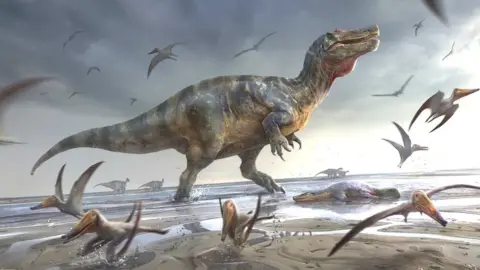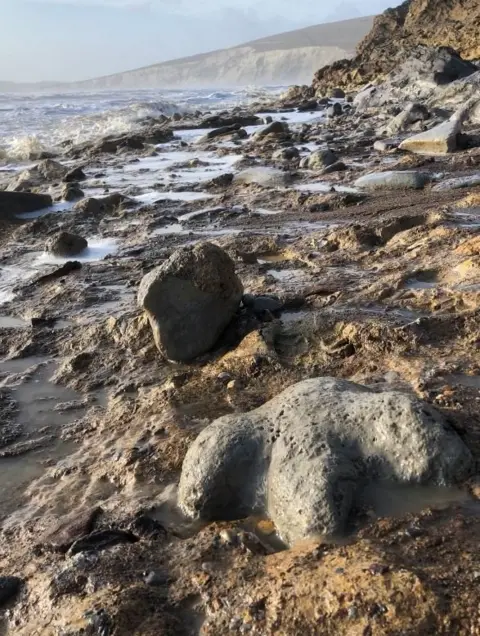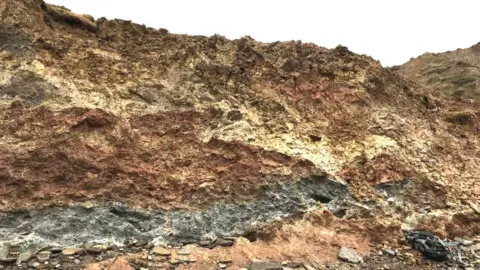Europe's 'largest ever' predator dinosaur found on Isle of Wight
 AFP
AFPRemains of Europe's largest ever land-based predator dinosaur have been discovered on the Isle of Wight, scientists say.
Palaeontologists at the University of Southampton identified the remains, which measured more than 32ft (10m) long and lived 125 million years ago.
The prehistoric bones belonged to a two-legged, crocodile-faced, predatory spinosaurid dinosaur.
PhD student Chris Barker, who led the research, said it was a "huge animal".
The remains, which include pelvic and tail vertebrae, were discovered on the south-west coast of the Isle of Wight.
The carnivore has been dubbed the "white rock spinosaurid", after the geological layer in which the remains were found.
 Chris Barker Dan Folkes
Chris Barker Dan Folkes Jeremy Lockwood
Jeremy Lockwood"This was a huge animal, exceeding 10m in length and probably several tonnes in weight," Mr Barker said.
"Judging from some of the dimensions, it appears to represent one of the largest predatory dinosaurs ever found in Europe - maybe even the biggest yet known."
It would have lived at the beginning of a period of rising sea levels and would have stalked lagoonal waters and sandflats in search of food.
Co-author of the research, Darren Naish, said: "Because it's only known from fragments at the moment, we haven't given it a formal scientific name. We hope that additional remains will turn up in time."
 Jeremy Lockwood
Jeremy LockwoodMost of the fossils were found by Isle of Wight dinosaur hunter Nick Chase, who died just before the Covid pandemic.
Jeremy Lockwood, another co-author of the study and a PhD student at the University of Portsmouth and Natural History Museum, said: "I was searching for remains of this dinosaur with Nick and found a lump of pelvis with tunnels bored into it - each about the size of my index finger.
"We think they were caused by bone eating larvae of a type of scavenging beetle. It's an interesting thought that this giant killer wound up becoming a meal for a host of insects."
The discovery follows previous work on spinosaurids by the University of Southampton team, which published a study on the discovery of two new species in 2021.
 Chase family
Chase family
Follow BBC South on Facebook, Twitter, or Instagram. Send your story ideas to [email protected].
